Introduction: Why Marble Feels Like an Heirloom
Ask any Indian homeowner why they installed marble flooring or marble countertops and often you’ll hear:
- “It’s for my grandmother’s age.”
- “Marble makes my home feel permanent.”
- “It reminds me of that palace in our village.”
Marble isn’t just a material. In Indian homes, it’s a touchstone of heritage and emotion—a cool surface that paradoxically carries warm memories. As a designer, I believe marble isn’t chosen merely for its aesthetics but because families invest intangible meaning into it. This material becomes a kind of memory vessel—a state of permanence, ritual, and identity.
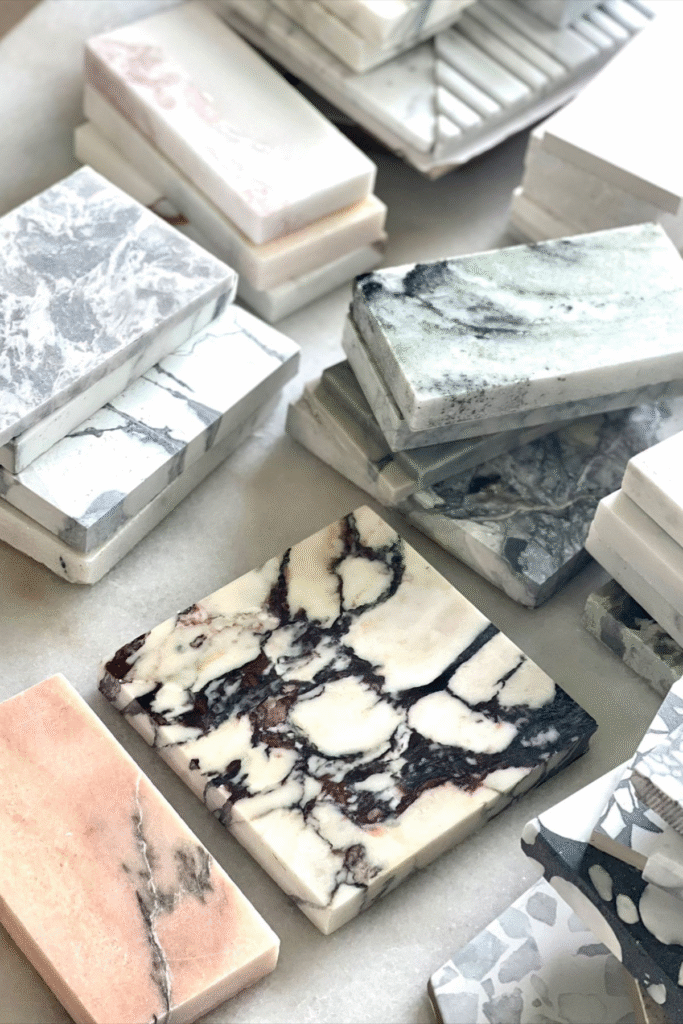
1. A Legacy Carved in Stone
The use of marble in Indian architecture dates back millennia—from Harappan-era artifacts to Mauryan palaces, culminating in the iconic Taj Mahal Architectural Digest+14madhusudanimpex.com+14Vyaparify+14. Makrana marble—used in the Taj and many temples—is valued not just for its toughness, but for spiritual purity and timeless shine madhusudanimpex.com+4Wikipedia+4bhaaratkarigari.com+4. Today, even in Indian homes, choosing marble feels like connecting to a long line of ancestral grandeur.
2. Marble in Rituals: A Spiritual Choice
Marble is often used in pooja rooms, divine altars, and sacred shelves. Its cool, clean surface symbolizes clarity and sanctity. Marble murtis (idols) are believed to radiate auspicious energy and purity, unmatched by wood or resin pandeymarblearts.com. Luxury marble-backed pooja areas, even among Indian diasporas, serve as emotional anchors to tradition and identity Wikipedia+3The Wall Street Journal+3pandeymarblearts.com+3.
3. Emotional Symbolism: Permanence, Prestige, Peace
When Indian families invest in marble, they’re investing in:
- Durability—a house may fade, but marble stays constant.
- Symbolic wealth—like the marble-clad mansions of Chettinad traders, marble denotes old money and ancestral sturdiness bhaaratkarigari.com+7madhusudanimpex.com+7madhusudanimpex.com+7Wikipedia.
- Cool comfort—especially in hot climates, marble feels physically calming, emotionally stabilizing, and spiritually sacred madhusudanimpex.comVyaparify.
In essence, marble announces: “This home lasts—and belongs.”
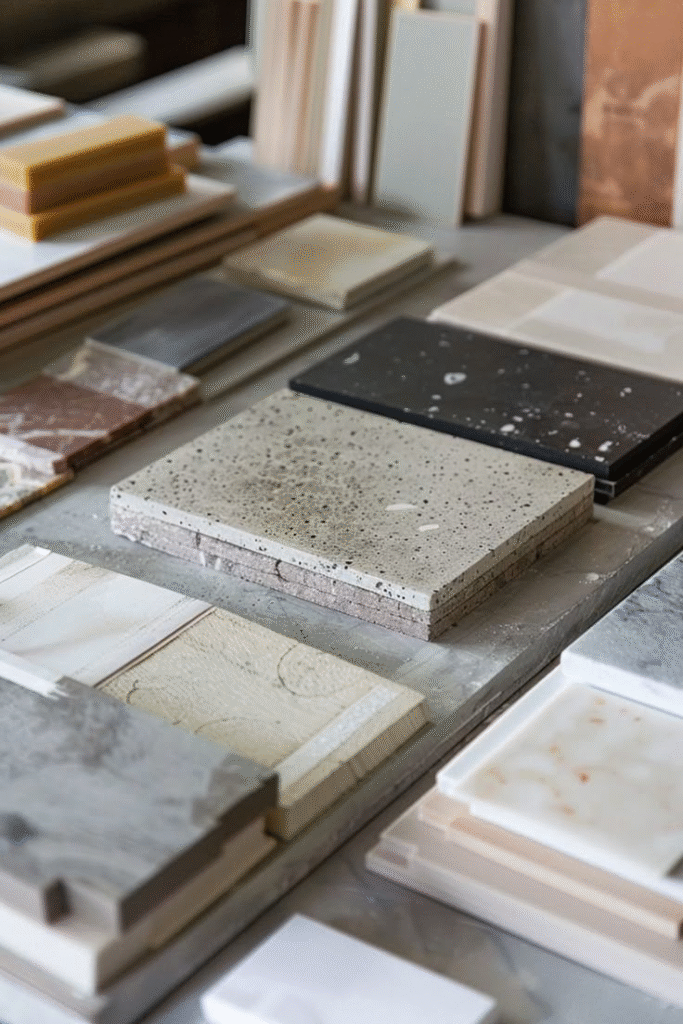
4. Marble as Architectural Memory
Families link marble to key moments:
- The first courtyard wedding under that marble terrace.
- The guest hall repainted every Diwali but anchored by marble flooring.
- The office where your father kept his desk on marble steps—taught respect through ritual.
Marble often frames the most remembered corners of a home, turning them into generational reference points.
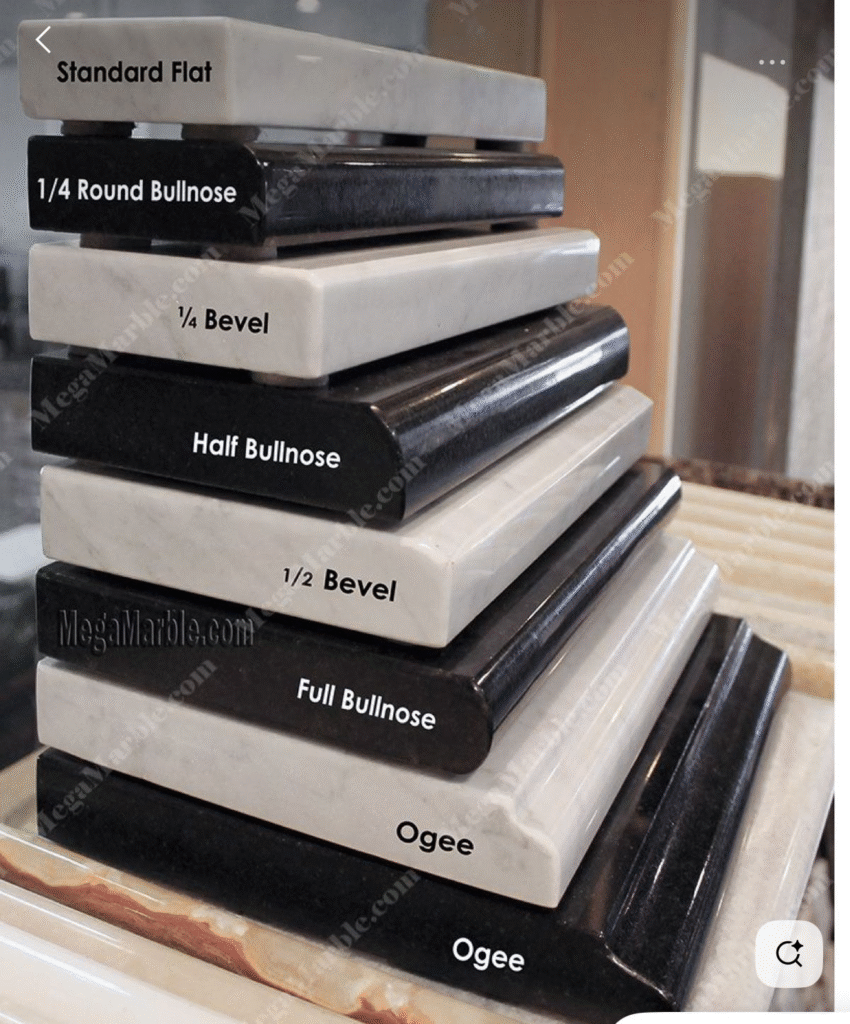
5. Sacred Coldness: Why Heat Isn’t Always Warmth
Marble’s cool surface contrasts with ordinary human warmth. But in Indian homes:
- It reminds elders of stone temples and cool pooja halls, invoking reverence.
- It offers relief in summer, literally cooling bare feet and skin.
- It resists change—you can repaint the walls, but the marble stays the same.
Its physical coldness translates into emotional coolness: spacious calm, quiet dignity, anchored memory.
6. Cultural Continuity Through Material Choice
Artisans in cities like Agra and Jaipur remain expert in marble carving, inlay, and murti crafting—skills passed down through centuries Wikipedia+10pandeymarblearts.com+10archipro.com.au+10Wikipedia+5Wikipedia+5Wikipedia+5reddit.com+2rudhigat.com+2pandeymarblearts.com+2. Families that commission sculpted marble idols or inlaid floors are often preserving crafts that their grandparents once admired. Marble becomes a living link between present and past.
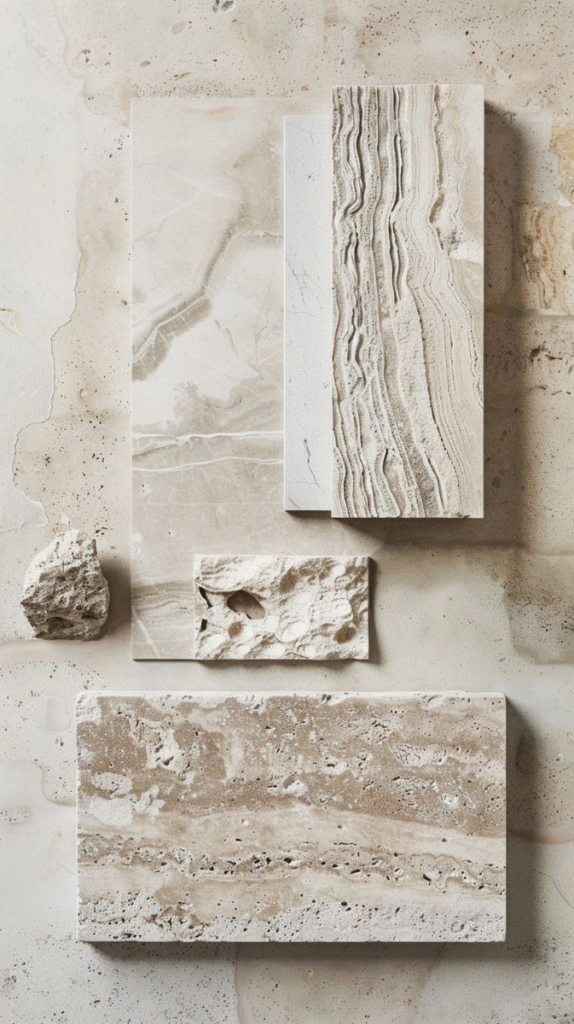
7. Architecture Lessons from Marble Palaces
The Marble Palace in Kolkata, built in the 1800s, showcases the ideal of material as memory: marble walls, floors, sculptures created to last forever—and still inhabited by descendants today Wikipedia. Chettinad mansions also blend marble floors, global materials, and large gatherings to reinforce family legacy through built space Wikipedia.
8. Marble and Emotional Anchoring in Homes Today
Modern Indian families still invest in marble for emotional reasons:
- Entry foyers, for prestige and permanence
- Pooja platforms, for spiritual solidity
- Living room accents, to reflect multigenerational taste
- Kitchen counters, stating permanence—not disposables
Even minimal marble here is nearly always accompanied by deeper emotional meaning.
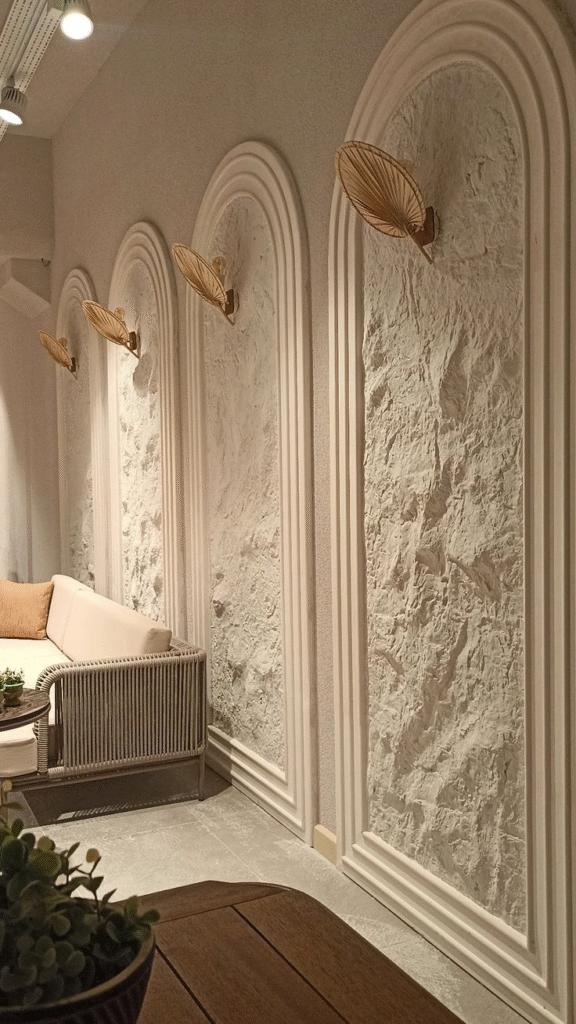
9. The Design Conflict: Cold Surface, Warm Family Life
Marble can feel:
- Slippery for children
- Cracks over time if not maintained
- Cold and impersonal for daily living
Yet many families choose it anyway, saying:
“It’s okay—it keeps the memory alive.”
It shows how tangible surfaces become emotional shortcuts.
10. Case Story: The “Grandmother’s Marble Bench”
A client in Rajasthan insisted on keeping their grandmother’s marble bench in the courtyard—even though they rarely used it. It was tempered, carved, and worn in her name. Despite garden redesign, we placed it centrally, repolished—but didn’t move. It became a memory seat—even as the rest of the courtyard changed around it.
11. How Designers Can Honor Marble’s Emotional Depth
As architects and designers, how to treat marble not just as a style choice—but as emotional material?
- Ask clients why the marble matters.
- Reuse old marble slabs—not just buy new.
- Polish memory pieces instead of replacing them.
- Mix marble with softer finishes—e.g., pairing marble floors with textile rugs.
- Allow marble to anchor rituals rather than dominate spaces.
12. When to Keep Marble—and When to Let It Go
Keep marble when:
- It’s linked to ceremony or identity
- It anchors family memory or lineage
- It’s still physically sound and can be polished
Let it go when:
- It limits usability (too cold, too slippery)
- It creates division—e.g., marble only in guest areas
- It was only installed for status, not emotion
Memory isn’t marble-sized—it’s heart-sized.
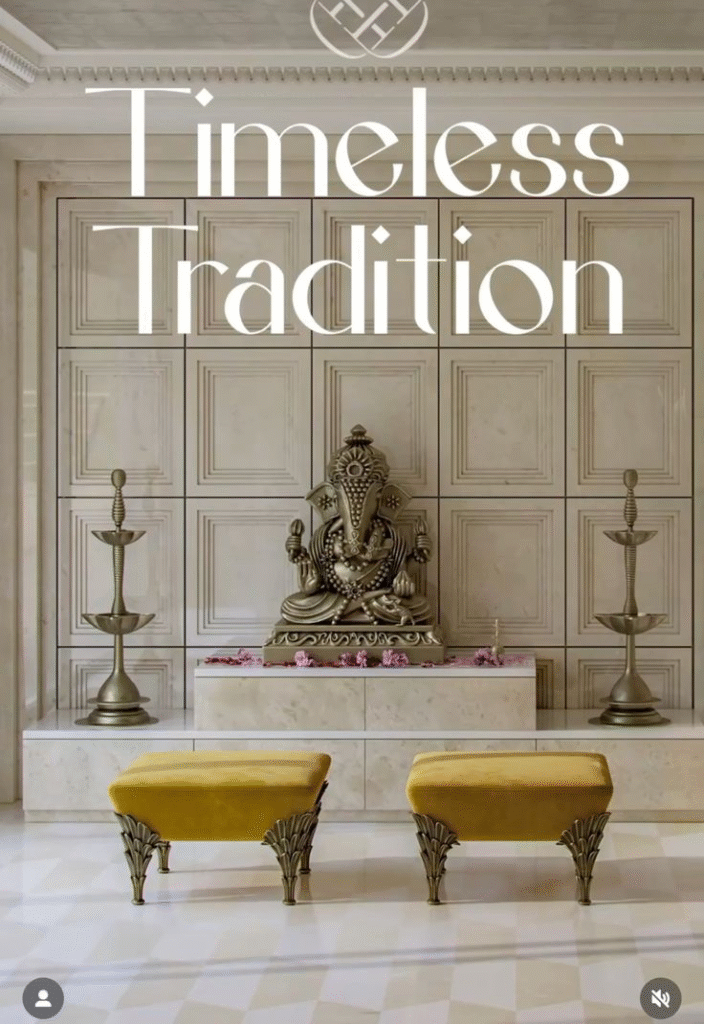
13. Marble as Emotional Architecture
Marble isn’t static. When treated thoughtfully, it’s dynamic:
- It cools in summer, warms in reflection
- It shines in sunlight, softens with candlelight
- It resists change, but reflects it in light and dust
Marble becomes a design metaphor—cold surface, warm connection.
14. Broader Reflection: Why Material Choice Matters in Memory
Our materials speak for us:
- Plastic shows economy
- Wood shows warmth (but ages)
- Marble shows permanence and lineage
Marble says: This place lasts beyond one life.
It says: We belong to something older.
And that—when used consciously—is architecture at its most human.
Conclusion: Marble Tells a Story Only Families Understand
Marble is cold—but memories don’t require warmth. They require time, endurance, and visibility. In India, marble is more than surface—it’s memory stone, legacy inlaid beneath our rugs, beneath our life. When families choose marble over laminate, they are choosing continuity.
Ask yourself:
Do the marble surfaces in your home hold daily comfort? Or family continuity?
Sometimes, the coldest surface carries the warmest history.
Design with Emotional Legacy in Mind
If you’d like design support that uses marble not just as material—but as emotional marker:
- I specialize in memory-guided design
- Integrate marble as legacy elements
- Balance tradition and usability
- Services across India from Ambala, Haryana
📩 Email: contact@mishulgupta.com
📍 Pan‑India architecture and interiors
